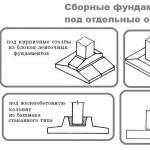French curtains are very beautiful, but at the same time very expensive. In curtain stores you can see a wide variety of models from different fabrics and materials with sagging folds or with more fluffy assembly options. However, it is much cheaper to make such a curtain yourself. However, this is a very painstaking and sensitive matter that does not tolerate mistakes.
In order to sew correctly, you first need to make the correct calculations, select the fabric, cut it and only then begin processing the selected fabric. Sewing French curtains begins with calculating the required cut of material.
When you see the curtain of this model, it immediately becomes clear that a lot of material is needed to make it. Folds, which greatly shorten the length, look more beautiful if the material was purchased to reduce the width of the finished curtain. This means that knowing the width of the window opening or the length of the cornice, you cannot take this figure as the width of the canvas. In order for the waves to be beautiful and the distance between the festoons to be sufficient, it is necessary to multiply the figure indicating the width of the desired curtain by a factor of 1.8. It is this coefficient that will allow the folds of the material to lie beautifully without creating the impression of sagging fabric.
When calculating the length of the fabric for making curtains, you need to multiply the number indicating the length of the desired finished curtain by at least two. In addition, you need to add a few centimeters of material to process the edges. This means that to the obtained values of the length and width of the blade it is necessary to add another 5-8 cm for processing the sections.
Which material to choose
Having calculated the length and width of the material, you need to choose one suitable for drapery. It should be elastic, and the folds on it should be smooth, even and soft. When choosing a piece in a store, you can try to gather a little fabric in your hand and see if the fold fits beautifully and forms even waves. If it bends, looks wrinkled or crooked, it is better not to choose this one.

The color of the curtains can be any, the main thing is that it matches the color scheme of the room as a whole. The denser the fabric, the more magnificent the folds will be, but they will have more unevenness. At the same time, the thinner the fabric, the more evenly the waves will form on it.
What do you need to buy besides fabric?
In addition to materials, for sewing French curtains you also need:
- sewing machine;
- pins;
- scissors;
- as well as soap or chalk (for cutting).
How to prepare fabric for cutting
Before cutting and sewing the curtain, you must trim its edges, using a special braid to secure the curtain. The side and bottom edges simply need to be folded in half and stitched, then pressed. The edges need to be processed before sewing the curtains, since then they will be uneven and cannot be processed beautifully.

It is also necessary to iron all the material before starting sewing, and if it is difficult to iron, then this should be done two or three times. After sewing the curtain, it will not be possible to iron it, so this stage cannot be neglected, but it must be done efficiently. When the edges of the canvas have been processed and it is completely ironed, you can start cutting.
How to cut material
To cut the fabric correctly, you need to know exactly the width and length of the finished curtain. When determining the width, you can focus on the length of the curtain rod; you can measure the length by measuring the distance from the curtain rod to the floor, or to the level where the curtain should end.
Next, you need to calculate the number of festoons and determine the distance between them. The number of scallops for the same curtain width can be different, and the finished curtain will also differ in appearance. The fewer scallops, the longer the folds will be; the more of them, the more magnificent the finished curtain will appear.
Below in the table, using the example of several options for the width of the finished curtain (if you don’t have the required option, you can do the calculations yourself) and the number of desired festoons, you can calculate the distances between them.

Having decided on the distance between the festoons, you should make marks on the stretched canvas after a certain number of centimeters. The numbers indicating the distance between the scallops are the centimeters through which it is necessary to make marks on the panel.
If the required width of the canvas is not among those indicated in the table, then you need to decide on the number of scallops and divide the width of the canvas by this number. The resulting figure will be the distance between the scallops.
For example: the width of the panel is exactly 500 cm.
Number of desired scallops = 8.
500/8=62.5 centimeters is the distance between the marks on the canvas.
When making marks on the canvas, you need to place the fabric on a flat, smooth surface, make marks on the back of the fabric at the top and bottom. A line should be drawn through both of these marks.
Carrying out tailoring
Having processed the edges, ironed the panel, and marked the lines along which the braid will be attached, you can begin sewing.
Step-by-step instructions for sewing a French curtain:
- It is necessary to take the braid that is intended for drapery and cut it into pieces equal to the length of the fabric. Using sewing pins, this tape should be attached to each top and bottom mark (to the lines along which the folds will form). All these manipulations should be done exclusively on the reverse side of the material. The 2 braids that will be located along the edges are placed as close to the side seam as possible. The edges of the braid from below must be ironed and stitched to the canvas;
- Next, you need to stitch the drapery tape to the panel. This braid is accompanied by a special cord, which later forms the treasured folds;
- Next you need to prepare the drapery cord. The length of one cord should be equal to the length of the finished curtain, and the number of cords should match the number of lines on which the braid is sewn;
- Next, you should thread the drapery cord through the holes on the braid. By pulling the cord tightly, a drapery is formed. The cord must be secured to the drapery braid so that it does not unravel and so that uniform folds are formed.

Then the curtain can be hung. The fact that the width of the curtain exceeds the size of the window opening will allow the folds to sag more freely and, accordingly, evenly.
In the master class described above, all stages of sewing curtains in the French style were covered. These steps include calculating the required amount of material, choosing the right fabric and a list of necessary materials that will be useful in the sewing process. In addition, the article covers in detail the issue of cutting the purchased fabric and directly sewing the curtain itself. It also describes in detail how to properly prepare the panel for processing.

Based on the information presented in this article, you can sew a French-style curtain yourself. These curtains are suitable for guest rooms and bedrooms. They give the room a special solemnity and comfort, look very rich and stylish. Also, curtains sewn in the French style never become outdated and always remain in fashion.
The very word “marquise” evokes associations with the world of aristocracy, balls and palace receptions. This word has two meanings: firstly, marquis is a high title, located on the hierarchical ladder between dukes (princes) and counts. Well, marquise, accordingly, is a title belonging to a noble lady. And secondly, awnings are exquisite curtains, which are also called French. Luxurious, cascading graceful folds, worthy of the halls of Versailles!
If you are attracted to elegant interiors, check out the selection of photographs demonstrating the use of awnings in living rooms, bedrooms and dining rooms. Your interior muse will be delighted!







History of French curtains
It is no coincidence that awning curtains got their name. This magnificent window decoration appeared in the era of classicism in palace halls and aristocratic living rooms. To demonstrate the splendor of the royal court and palaces of the French nobility, ordinary curtains made of expensive fabrics were no longer enough. And sophisticated, sophisticated awnings with a waterfall of graceful folds were born.
The appearance of these curtains corresponds to the canons of classicism: on the one hand - wealth and palace luxury, on the other - symmetry and clarity of lines, even some severity and brevity. Awnings are characterized by smooth vertical rows of festoons, evenly collected in horizontal folds. As a result, associations arise with cascading waterfalls, easily and naturally falling from the eaves.


Types of French curtains
Despite the general principles of creating awnings, these curtains are far from the same type. French curtains can be divided according to several criteria:
- By lenght. They can reach the window sill, drop below it and almost touch the floor. A classic is considered to be awnings, created for narrow high windows and descending below the window sill by about a quarter of the length. But there are no strict rules here, the main thing is a sense of proportion and taste. Nowadays, awnings are also used for draping panoramic windows - entirely, to the floor, and in short variations.

- By the type of folds. They can be either very lush or very light, reminiscent of ripples on a lake.


- By design. There are stationary and lifting awnings. The first type is classic. The second is a convenient modern variation, inspired by the example of Roman and Austrian curtains.


French curtains in the interior
The choice of fabric for French curtains depends on the room in which they will be placed. Nowadays, awnings are most often sewn from transparent and translucent fabrics, acting as a luxurious variation of tulle. At the same time, French curtains can play the main role in window decoration, and act as a background for thicker and darker classic curtains.



But nothing prohibits sewing awnings from silk or satin, including rich, deep colors. Here are some examples:
- The windows in the living room can be decorated with turquoise satin cascades. This is a bright and at the same time light shade.


- Thick silk and satin in shades of ivory and beige are popular when creating French curtains.

- Awnings of golden or champagne color will make a chic impression (but with such luxury you should be careful not to cross the line of good taste!).

- You can even make French curtains from burgundy-colored fabric, and they will look like garlands of gorgeous roses on the windows.


Additionally, awnings can be decorated at the bottom with fringes, ruffles or tassels, but you should choose light and airy options so as not to visually overload the interior design. French curtains are already luxurious, so you shouldn’t decorate them too much, especially if they are part of a window ensemble along with curtains.


It is difficult to overestimate the importance of French curtains in creating a beautiful interior design. They represent the best combination of simplicity and sophistication, which, in fact, attracts the attention of a large number of consumers. Such products differ from analogues in lush draperies, which are formed along the entire length of the fabric due to even scallops. Due to such an elegant appearance, French curtains have found application not only in houses and apartments, but also in public interiors, giving each room solemnity and comfort.
The history of French curtains
The first mention of French curtains dates back to the beginning of the 18th century. They began to be made for decorating the royal baroque. Later they found application in classicism. They were made from thin fabrics, mainly silk. In large rooms, the windows were covered with light French curtains. In homes, it was preferable to use thick silk curtains.
Modern collections of French curtains 2015-2016
Today's French curtains are distinguished by the content of modern dense fabrics of various tones. The latest collections attract attention with the presence of rigid, lush folds, made in pastel colors. Also, a new trend involves the use of polyester, which is not inferior in its softness even to silk. In addition, this material is very practical and does not lose its properties during washing. Such curtains are great for transforming not only the interiors of banquet halls, but also stylish apartments. Due to the wide abundance of textures and colors, modern collections of small curtains can even be used in small rooms. Light French curtains allow you to visually increase the space of the window and give the room a unique look.
French curtains on original fabrics from Europe

Salon curtains ArtService offers everyone a wide range of amazing French curtains for every taste. In our company, you can save a lot, as we cooperate directly with fabric manufacturers. In addition, we are not chasing large fees, because we are interested in a wide audience of potential customers. Also, the quality of products should be attributed to the advantages of purchasing French curtains from us. We employ only experienced professionals who are ready to take on even the most complex order. Individual curtains will allow you to more effectively decorate any room, giving it a solemn atmosphere. We use only high-quality products in the production of products. At the same time, the company does not stop there, but continues to develop its production capacity, regularly adding new French curtains to its collections.
At ArtService you can purchase French curtains for:
- Bedrooms;
- Hall;
- Hall;
- Kitchens;
Our custom-made French curtains are 2-3 times cheaper than our competitors for the reasons already stated above. At the same time, they are distinguished by even greater sophistication and beauty. Such products will be an excellent decoration for any room in the house or apartment. At the same time, they will be able to give each office more solidity.
The range of finished products includes unique French curtains with drapes for bedrooms. These curtains are perfect for decorating windows in bedrooms, adding ease and romance to the room. If desired, we can transform ready-made collections with various accessories such as tassels and lambrequins. Such solutions look very interesting on arched windows.
We offer a guarantee on all our products. If you doubt the quality or appearance of the goods, you can return them and get your money back.
The best deals!
The ArtService company constantly holds promotions and provides discounts on remaining types of fabrics, accessories and other items. You can take advantage of one of the company's hot offers and we will offer curtains at a significant discount.
French curtains are a classic of the genre. They are perfect for any interior, living room or bedroom.
A huge selection of ready-made French curtains with different interpretations. But it’s always interesting to do something with your own hands, to contribute to the design of the room.

In this article we will tell you where to start sewing curtains and how to properly make real French curtains.

Choosing a fabric
The hardest part is choosing fabric from such a wide variety. The main thing in French curtains is that the weave matches the drapery. It can be a dense fabric, airy, light, and here it is already selected to match the style of the room.

Each fabric has its own properties, they must be taken into account when sewing French curtains:
- With high density fabric, cascading waves can be made;
- Lush folds are made using light fabric;
- If French curtains are intended for the kitchen, then a light translucent fabric would be appropriate;
- Fabrics with patterns for this type of curtains must be selected carefully, do not forget that folds will be made where the pattern may get lost;
- Fabric with bright colors will create a special atmosphere; if the curtains are plain, then diluted with a light pattern that is not flashy.

Many people prefer the classics. As a rule, the fabric chosen for French curtains is satin, silk or tulle. A standard choice you can't go wrong with.

Taking measurements for sewing curtains
If you have decided on the look, now you have to measure the window and cornice to know how many meters of fabric are needed.

Do not forget that a sufficient amount of fabric is spent on drapery (coefficient 1.8 for the width of the fabric), take this into account.

Measure the cornice initially and add another 5 centimeters to this calculation for the seams. Use the remaining material for assembly.

Multiply the resulting length of the curtain by two and to this amount add another 3 centimeters at the top and 5 at the bottom for the seams. Thus, we have a complete calculation of the required fabric for the future creation of French curtains.

Detailed sewing diagram - pattern
Without a pattern, the technology of sewing curtains will be difficult to understand. Calculation alone is not enough. Therefore, you need to follow the drawing and certain actions.

And so we’ll figure out how to sew French curtains with our own hands.
- To achieve a truly designer creation without any visible homemade work, we follow the following rules:
- We do decatification. What do many people ask? Decating your image processing the fabric so that the curtains do not shrink in the future. Before sewing, soak the fabric in warm water and leave for 15 minutes, then wring it out well and let dry.
- Let's start processing from the bottom and top. Straighten the fabric and fold the fabric 1.5 cm on all sides, fasten and hem.
- Important! The fold at the bottom is 2 cm.
- We make notes for the wings with the help of a regular ruler, make sure that the gaps are equal. Drawstrings are made from pieces of fabric. For an example of a sketch, see the photo of French curtains.
- Sew the fabric along the marked line, the width of the fabric should be 3 cm, the hem is made to the inside from the side.
- Do not forget that the curtain is regulated by a cord in the top, which must be threaded into the backstage.

In this way, curtains are formed that will later decorate your room, and the work done with your own hands will arouse the pride and respect of your family.

French curtains in the interior can be made in different styles: baroque, empire. It all depends on the design of the room and your wishes.

Photos of French curtains design
















French curtains appeared during the reign of King Louis XIV, but their popularity has not fallen to this day. A possible explanation for this is the unique solemnity of curtains, which is so necessary in respectable restaurants, famous theaters, famous concert halls and other institutions. Sometimes they decorate home windows. Sometimes they are called French blinds, as well as “awnings”. Let's look at the history of French curtains and answer the question, how to make a French curtain with your own hands? A step-by-step master class on sewing an “awning” will be given below.
 It is unknown who exactly created such curtains. But very quickly the curtains became personify wealth and luxury. Their second name - “marquise” - means a noble title of Europe.
It is unknown who exactly created such curtains. But very quickly the curtains became personify wealth and luxury. Their second name - “marquise” - means a noble title of Europe.
To sew such a curtain, you need to take a fabric cloth, sew a braid on it vertically, insert cords and make scallops. The design is simple, but the finished product turns out to be a real masterpiece. The resulting waves look very luxurious and resemble the decoration of royal palaces.

Do not confuse French curtains with Austrian ones. They differ in the number of waves: the French ones all consist of waves, while the Austrian ones only frame the bottom of the canvas.

Varieties
French blinds may vary in length. They come in long, short or medium length. Curtains are also divided into:
- stationary;
- lifting
The stationary one closes the window completely and does not go up. Such products made from lightweight materials, they perfectly transmit the sun's rays.

Lifting curtains have a lock that regulates their length and number of waves. They can be turned into a lambrequin.
Any types of French curtains do not expand in width.

 To create beautiful folds, light fabrics are used that respond well to the creation of draperies. In earlier times, cambric and silk fabrics were used to sew such curtains. Later they began to sew from tulle fabrics. Nowadays organza is used.
To create beautiful folds, light fabrics are used that respond well to the creation of draperies. In earlier times, cambric and silk fabrics were used to sew such curtains. Later they began to sew from tulle fabrics. Nowadays organza is used.
Polyester is also used. It helps create a beautiful structure and is easy to care for. Polyester curtains are hung in public institutions, where they not only perform a decorative function, but also protect from ultraviolet rays.

For interiors where it is necessary to emphasize respectability, velvet is used. This fabric forms attractive folds and creates the atmosphere of an ancient castle.
In general, elastic fabrics that easily form soft waves are suitable for sewing French blinds. Their main purpose is to form original festoons.
When choosing fabric for sewing French curtains with your own hands, you should consider:
- soft French curtain fabric creates attractive waves;
- hard material forms folds;
- Transparent fabrics are used in the kitchen; organza is an ideal option;
- plain fabric looks good, but don’t be afraid of a modest floral pattern;
- colored materials will add romanticism to the space.

Application
 French curtains create an atmosphere of celebration and special solemnity. Therefore, they are most often used in living rooms. But curtains can also add charm to other rooms in the house, be it the kitchen or the bedroom. The main thing is that this detail is combined with the overall style of the room.
French curtains create an atmosphere of celebration and special solemnity. Therefore, they are most often used in living rooms. But curtains can also add charm to other rooms in the house, be it the kitchen or the bedroom. The main thing is that this detail is combined with the overall style of the room.
For use in the kitchen, curtains are sewn from synthetic fabrics with a pattern; these can be small or large flowers. You can also use cotton, linen, and cambric as materials for do-it-yourself drawstring curtains.
If the canvases are complemented with ruffles and frills, they will fit perfectly into country style. Curtains can be decorated with fringe, tassels, and shiny threads.
Selecting material for curtains, you should proceed from the style of the room. In any case, French blinds can add luxury to any room. They are hung in rooms decorated in Baroque, Empire, and Classic styles.

Self-tailoring
 It is not necessary to buy French curtains in a store. You can sew them yourself with your own hands. Sewing the “awning” will take only a few hours.
It is not necessary to buy French curtains in a store. You can sew them yourself with your own hands. Sewing the “awning” will take only a few hours.
How to sew French curtains with your own hands? We offer a step-by-step master class on sewing French curtains:
- measure the dimensions of the window;
- We multiply the resulting width by one and a half, and the figure indicating the length must be multiplied by two. The result obtained will indicate how much fabric we need. Don't forget to allow seam allowances;
- We carry out decatification, for this we expose the fabric to damp-thermal effects. A similar procedure is required to prevent tissue shrinkage in the future. To do this, the fabric is soaked in warm water, squeezed out, allowed to dry and ironed;
- hem the edges of the product;
- we mark the drawstrings at equal intervals and sew on the back side a braid for French curtains 3 cm wide. These can also be strips of fabric;
- We thread cords into the side seams and strips of braid. We form the drawstrings. We fix the cords on top. Leave the lower ends free. The height of the curtain is adjusted using a cord threaded into the drawstring;
- Weights are hung on the lower edge of the product so that the curtain maintains strict verticality.
So, the do-it-yourself awning curtain is ready!
We looked at how to sew a French curtain with your own hands, step-by-step instructions are given above.

How to care for curtains?
Main disadvantage French curtains are accumulation of dust on their folds. A vacuum cleaner will help fight it. Any stains that appear are removed with a damp cloth.
Curtains made from organza or tulle are machine washable on a delicate cycle. Velvet items are sent to dry cleaning.


















